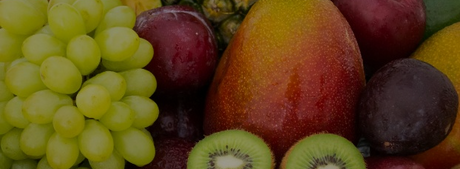Produce Carambola (Five Fingers)
Carambola or starfruit, is the fruit of Averrhoa carambola, a species of tree native to Indonesia, the Philippines, Malaysia, Vietnam, Nepal, India, Bangladesh, Sri Lanka, Mauritius, and Seychelles. The fruit is popular throughout Southeast Asia, the South Pacific, Micronesia, and parts of East Asia. The tree is also cultivated throughout non-indigenous tropical areas. The fruit has distinctive ridges running down its sides (usually five but can sometimes vary); when cut in cross-section, it resembles a star, hence its name. The entire fruit is edible and is usually eaten out of hand. They may also be used in cooking and can be made into relishes, preserves, and juice drinks. In maritime Southeast Asia, it is known as belimbing in Indonesian and Malay and balimbng or saranate in Tagalog. In the Mariana Islands it is called bilembines in the native Chamoru language. In Indochina, it is known as ma fueang (มะเฟืà¸à¸‡) in Thai, maak fueang (à»àº²àºà»€àºŸàº·àºàº‡) in Lao, plae speu (ផ្លែស្ពឺ) in Cambodian, hcaungg lyarr pain in Myanmar, and khế in Vietnamese. In East Asia, it is known y¡ngt¡o (楊桃/æ¨æ¡ƒ) in Chinese (Mandarin). In South Asia, it is known as kordoi (কৰà§à¦¦à§ˆ) or rohdoi (ৰহদৈ) in Assamese, kamranga (কাà¦à¦°à¦¾à¦™à§à¦—া) in Bengali, kamrakh (काà¤à¤°à¤–) in Hindi and Gujarati, karambal-drakshi or kaparakshi hannu (ಕಪರಾಕà³à²·à³€ ಹಣà³à²£à³) in Kannada, chaturappuli (à´šà´¤àµà´°à´ªàµà´ªàµà´³à´¿) or vairappuli (വൈരപàµà´ªàµà´³à´¿) in Malayalam, karambal in Marathi and Konkani, karmanga (କରà¬à¬‚ଗା) in Odia, thambaratham (à¤àà¯àªà°à¤à¯à¤àà¯) in Tamil, ambanamkaya (అ౦బాణ౦కాయ) in Telugu, khafrenga in Sylheti, theiherawt in Mizo, sohpynshong in Khasi, kamranga (කà·à¶¸à¶»à¶‚ගà·) in Sinhala, and dhaarepuli or bimbli in Tulu.
Produce Carambola (Five Fingers) is backordered and will ship as soon as it is back in stock.
Couldn't load pickup availability


























